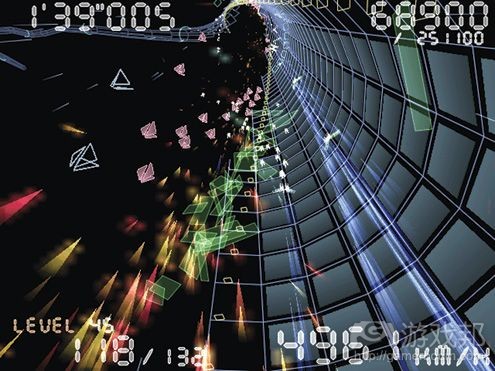关于游戏表现元素和设计起始点的讨论
作者:Raph Koster
The Cesspit的Abalieno对“The Healing Game”给出消极回应,并提出了几个有趣的观点。但是,我觉得我们并没有就同一个问题展开讨论,所以我想退一步,确保我们讨论话题的一致性。以下是我在思考“游戏如何运作”时使用的框架,我花了很多时间来思考这个方面的问题。
首先,机制和规则属于游戏的一部分。这个部分是不可缺少的,如果你将这个部分取出,那么剩余的部分就无法再被视作游戏。这些机制和规则形成供玩家互动的系统,并在与系统的互动中获得各种反馈。玩家并没有处在系统中,但是他们与系统有一定的关联(游戏邦注:比如通过RPG游戏中的角色)。
然后,游戏中有所谓的“内容”。这是系统中的统计学变量,也就是向相同规则提供的不同输入。记住,我们现在仍然是在完全抽象的环境下讨论游戏。
随后,便是游戏的呈现。这不是个简单的主题,而且特别重要。几乎不存在没有呈现元素的游戏(游戏邦注:有些是特例,比如下盲棋)。在这种情况下,机制被称为“战斗”,而统计学变量被称为“怪物”。从根本上来说,我们拥有的是围绕机制和内容而构建起的隐喻关系。
呈现的前后是另一个层次的“内容”,包括叙事之类的东西。现在,我们进入了较为熟悉的领域,所以我将不会耗费过多的笔墨来阐述,解析机制中的统计学变量和隐喻中的变量即可。
Abalieno辩解称,以康复游戏为例子很不妥,因为游戏设计应当总是从叙事端开始,而我的例子是从机制端开始。
我要坚持的是,这两种方向都是可行的。许多从机制端开始制作的游戏也成为了经典之作,尤其是桌游领域的许多作品。当然,街机游戏中也不乏此类作品,比如《Tempest》和《Qix》。也有许多经典游戏是从叙事端开始制作。但是,更多人觉得,所有游戏都是从这两个极端的中间处开始生成,比如《鸟骑士》。
1、如果我制作的是有关康复的游戏,我会选择从隐喻关系开始。
2、如果我制作的是有关扫除非洲所面临疾病威胁的游戏,那么我会选择从叙事开始。
杰出的游戏会在机制和隐喻间建立平衡关系,你无法分辨出游戏的制作究竟从何处开始,两个方向似乎都是可以的。
这样看来,我们对这些层次还需要进行更多的审查和思考。
1、在机制层次上,我们面临的问题是如何设计游戏系统、游戏设计规范的思考、对游戏学的思考以及对创新型游戏玩法的讨论。
2、在统计学变量层次上,我们的问题是“平衡”、紧急行为、重复性、游戏范围和关卡等内容的定义。
3、在隐喻层次上,我们可以开展“The Healing Game”之类的思考实验以及进行隐喻是否正确的讨论。
4、最后,我们还需要研究叙事层次,包括最大化地学习其他媒体的内容以及掌握故事叙述、艺术设计和建筑学等工具等。
从上文的解析中我们可以看出,游戏设计师必须多才多艺。毕竟,各层次的内容与科学、数学、哲学和创意艺术都有所关联。要制作出游戏,你必须学会从这些角度来观察世界。
当然,我认为最不可简化的是核心机制。这才是产品成为游戏而不是其他媒介的关键。
游戏邦注:本文发稿于2006年3月5日,所涉时间、事件和数据均以此为准。(本文为游戏邦/gamerboom.com编译,拒绝任何不保留版权的转载,如需转载请联系:游戏邦)
A bit on how I think games work
Raph Koster
Abalieno at The Cesspit reacted kinda negatively to “The Healing Game” and raised some interesting points. But I think we’re talking past each other to a degree, so I wanted to take a step back, and make sure we agree on terms. The below is the framework that I am using in thinking about “How Games Work,” which I am thinking about a lot because that is, broadly speaking, the next book.
First, there is a part of the game that is the bare mechanics and rules. This part is irreducible; if you take it out, what you have left is no longer considered a game. These bare mechanics and rules form a system that players can interact with; poke and prod the system, and you will get back various responses. The player is not in the system, but they might have a very evolved proxy that is (such as a character in an RPG).
Then there is what might be called “content.” It’s statistical variations on the system. It’s slightly different input provided to the same rules. Keep in mind here we are still oeprating fully in the abstract.
Then there is the presentation of the game. This is not at all a simple subject, either, and it is tremendously important. Games without presentation barely exist (there are a few, such as playing chess entirely in your head). Now the mechanics are called “combat” and the statistical variation is called “monsters” and so on. Basically, what we have is a metaphor that encompasses the mechanics and the content.
Above and beyond the presentation is another layer of what typically gets called “content,” which includes things like narrative. Now we’re into familiar territory, so I won’t elaborate too much on this, save to say that instead of being statistical variation on the mechanics, it’s variation on the metaphor.
Abalieno is arguing that the healing example is bad because game design should always proceed from the narrative end. My example proceeded from the mechanical end.
I am going to insist that both approaches are valid. Many many games have been created that are classics that started from the mechanical end — particularly in the realm of boardgames, but also in the arcade with things like say, Tempest or Qix. And many are the classic games that started from the narrative end. But perhaps most telling are all the games that originated somewhere in the middle — one can easily imagine Joust starting there, for example.
Were I to do a game “about healing” I would be starting with the metaphor.
Were I to do a game about wiping disease from the face of Africa, I would be starting with the narrative.
The best games will achieve a marriage of mechanics and metaphor to the degree where you won’t be able to tell where it all began; both will be considered holistically. (They will still be susceptible to the above analysis, however).
Seen in this light, we have much to examine and think about in each of these layers.
At the mechanical layer, we have issues such as how to design game systems, the thoughts on game design grammars, much of the thoughts on ludology though not all, and perhaps most importantly, the discussion of innovative gameplay.
At the statistical variation level, we have questions such as what is “balance,” emergent behaviors, repetitiveness, game scope, levels, and so on.
At the metaphor level we can have thought experiments such as “The Healing Game” and discussions of whether or not our metaphors are the right ones.
Finally, there’s a ton for all of us to learn at the narrative layer, from maximizing our learning from other media to mastering the tools of storytelling, of art design, of architecture, and so on.
This breakdown is, perhaps, why game designers must be multidisciplinary. After all, the layers correspond roughly to science, mathematics, philosophy, and creative arts. To make something that works holistically, you’ll need to draw on all those ways of looking at the world.
The one that feels irreducible to me, of course, is the core mechanic. That is what makes this medium be games, and not something else. (Source: Raph Koster’s Website)








































 闽公网安备35020302001549号
闽公网安备35020302001549号